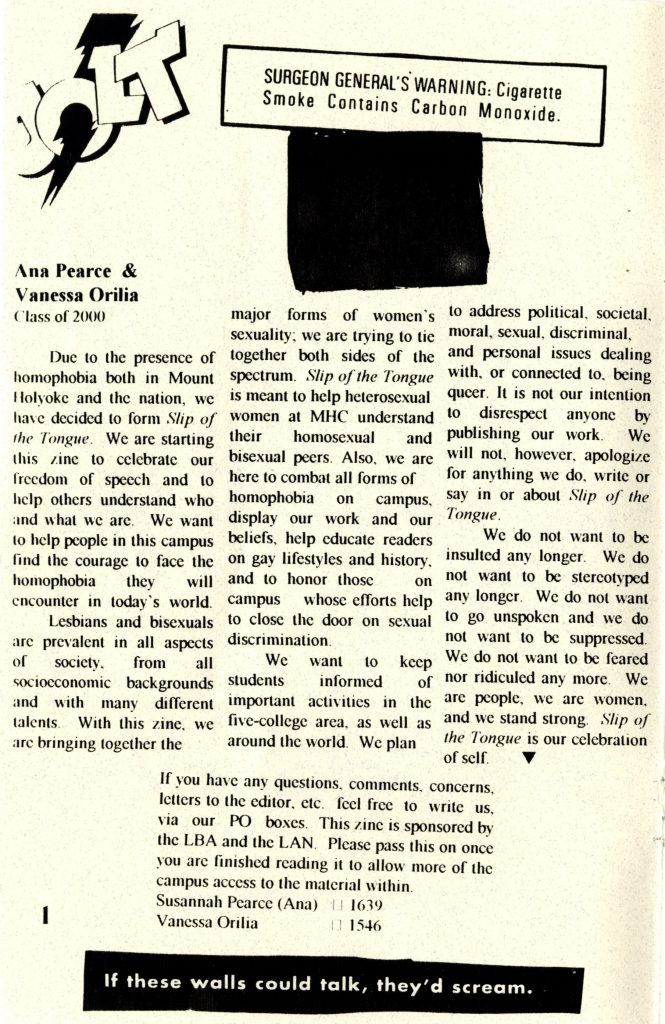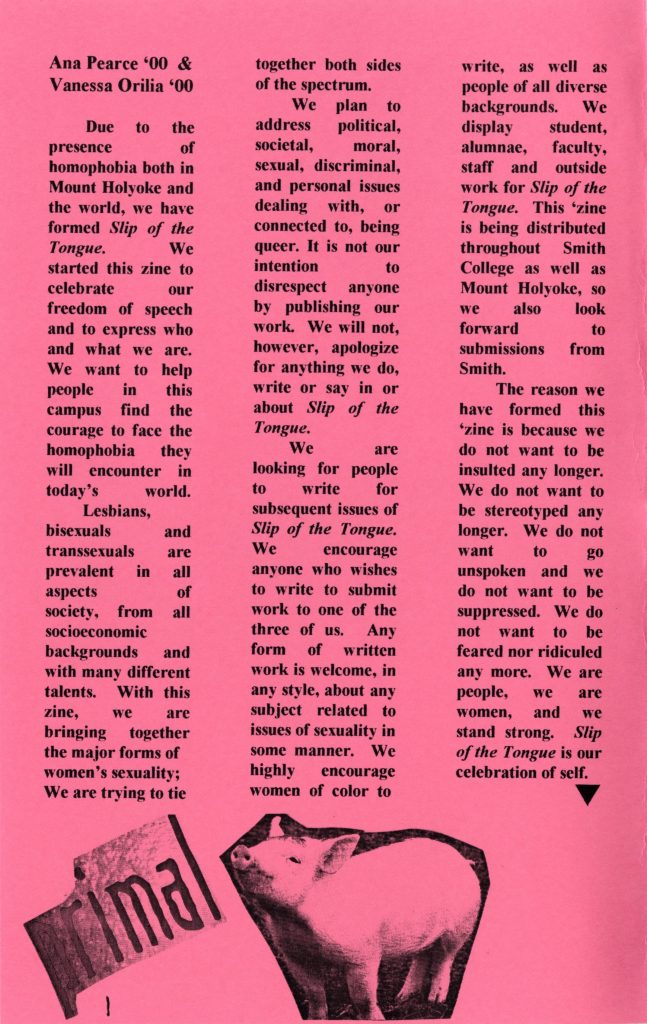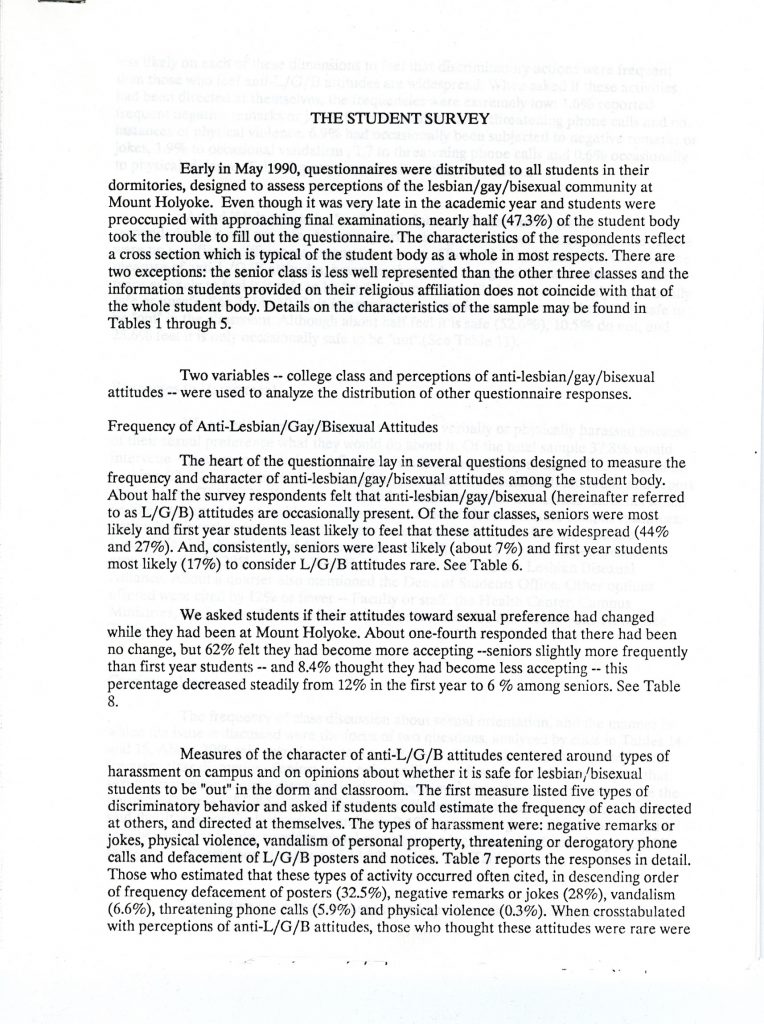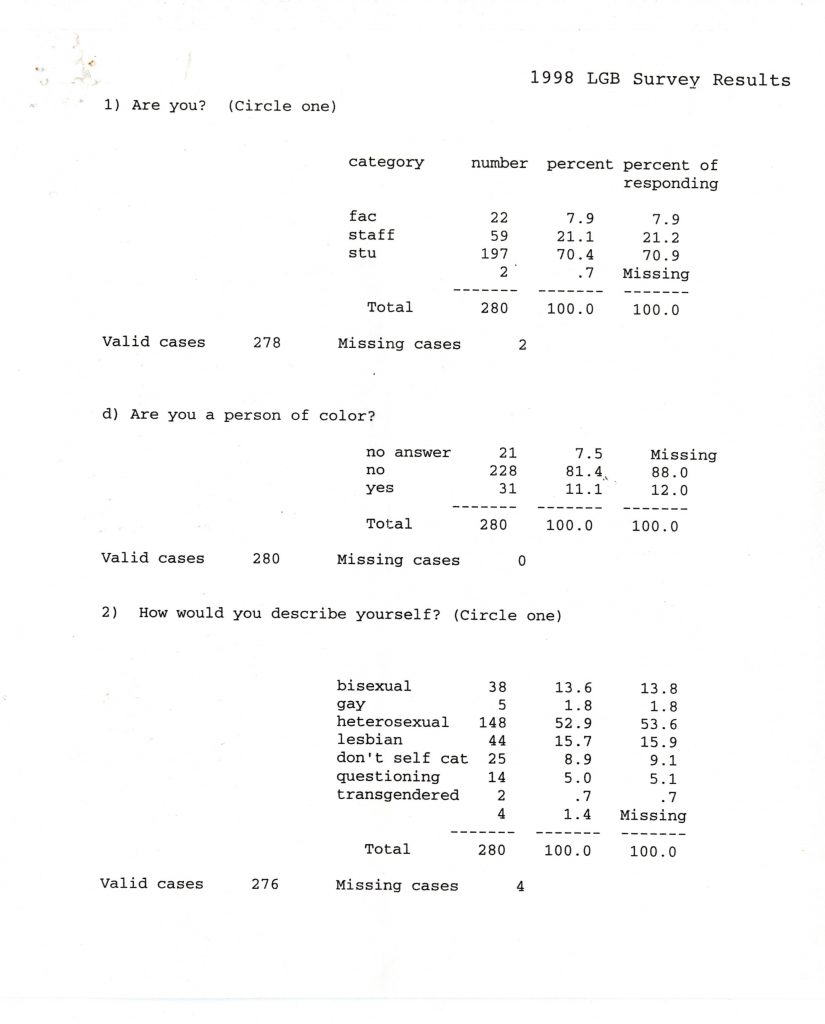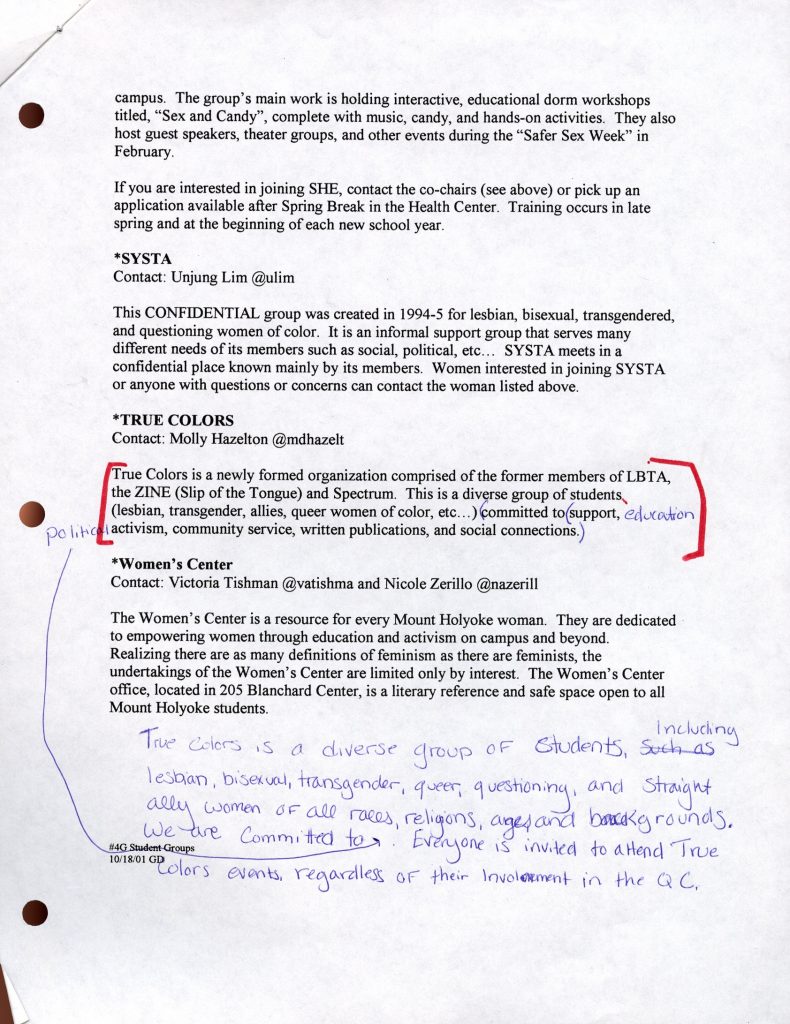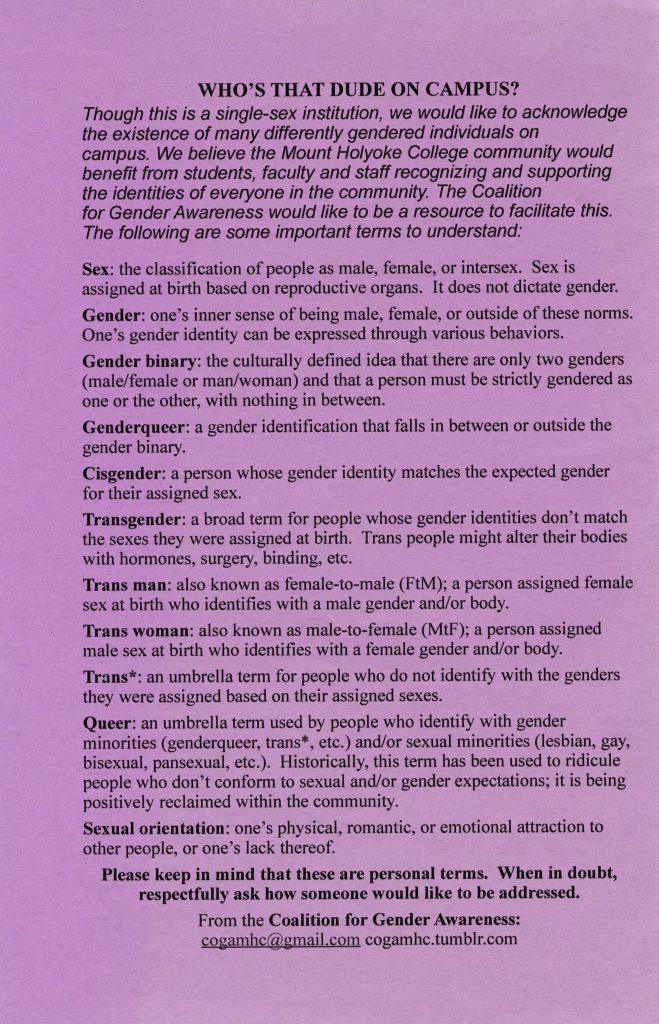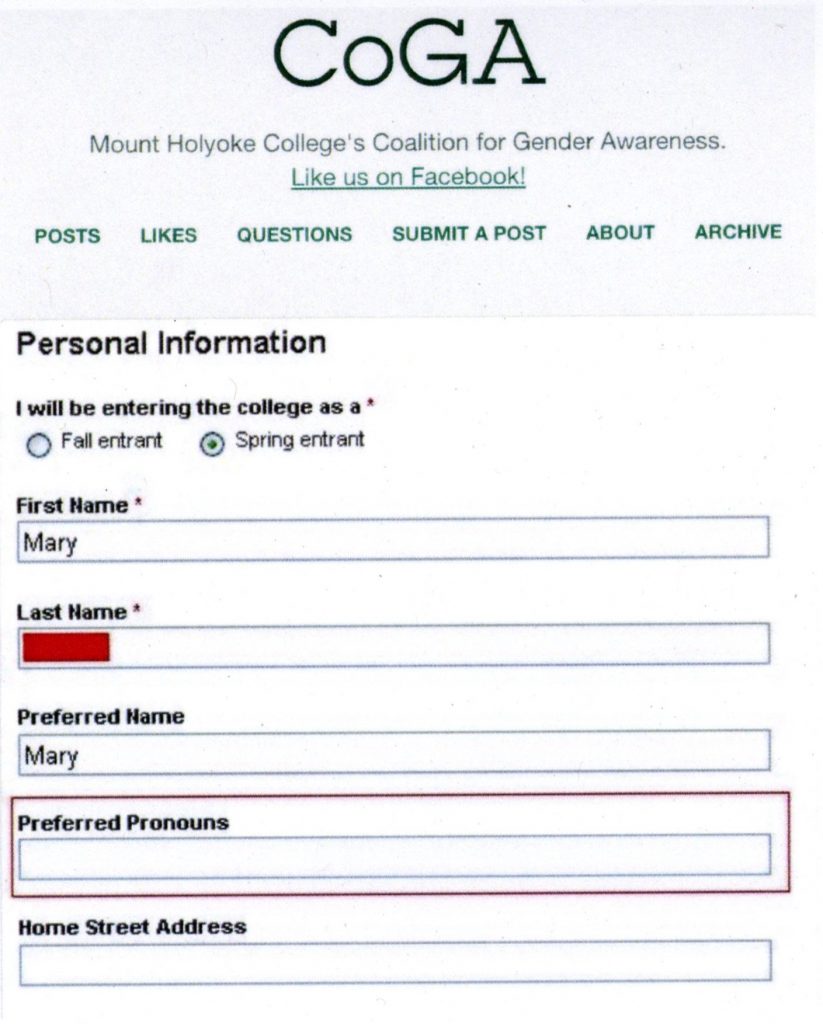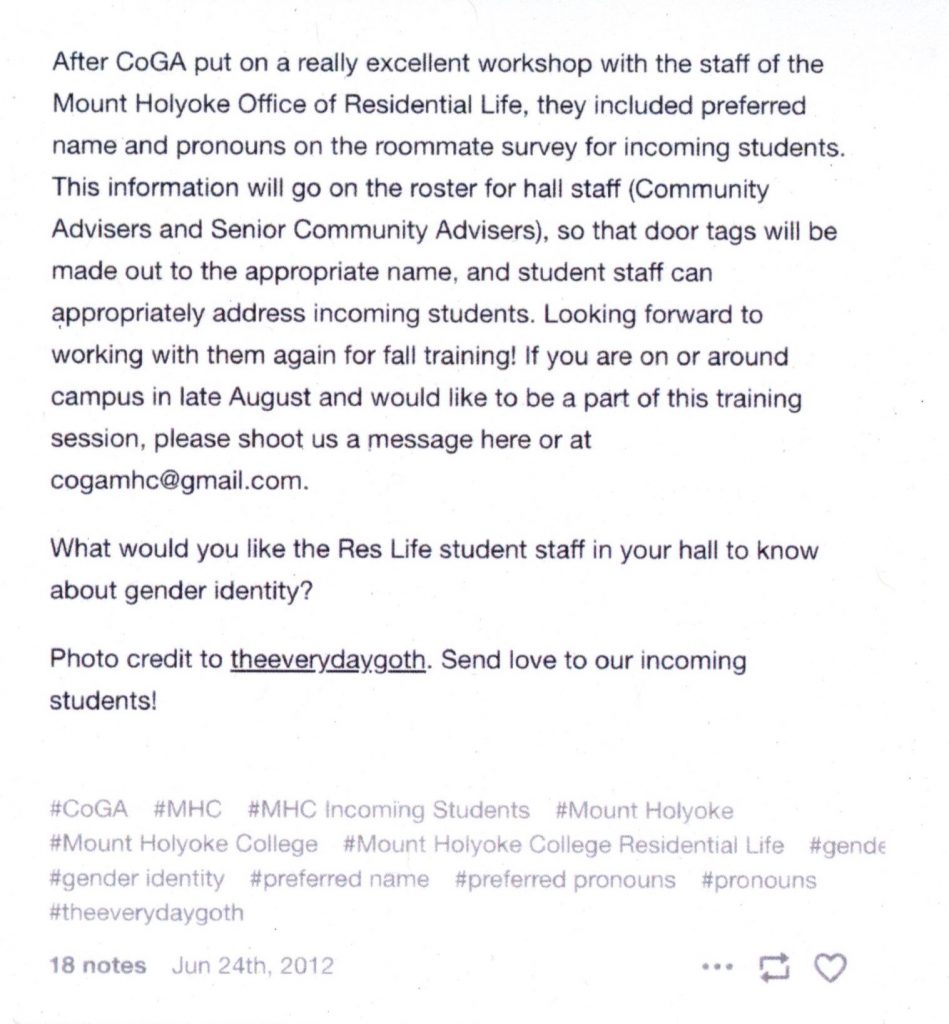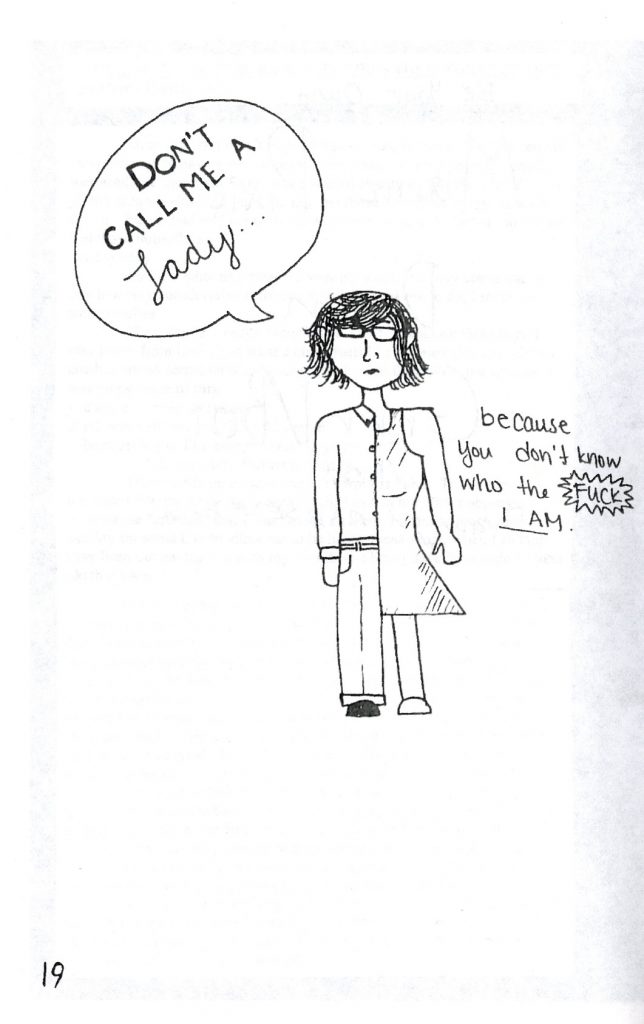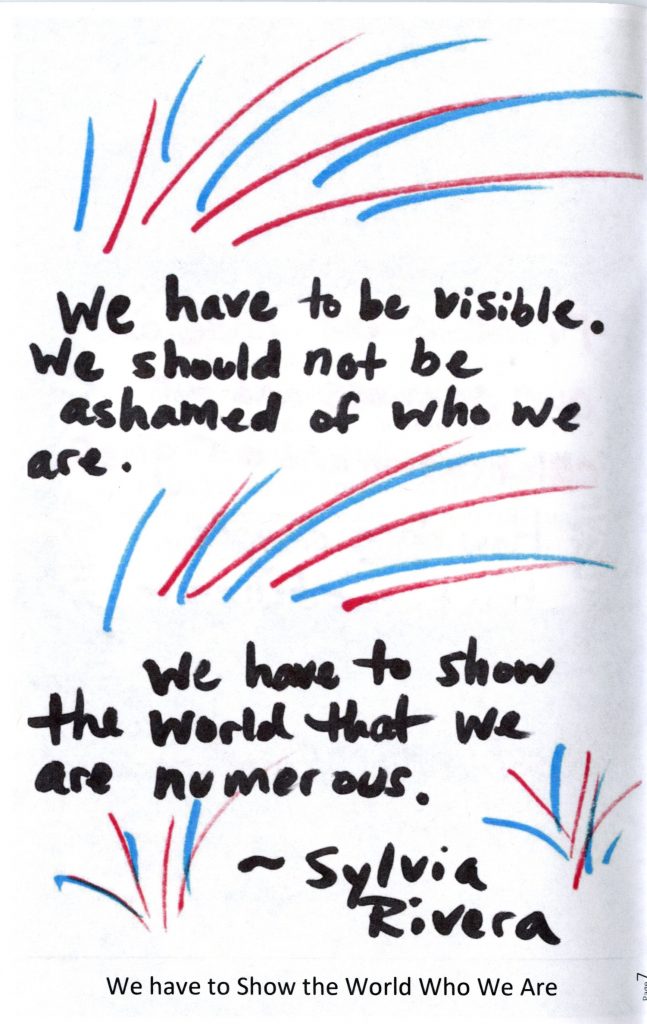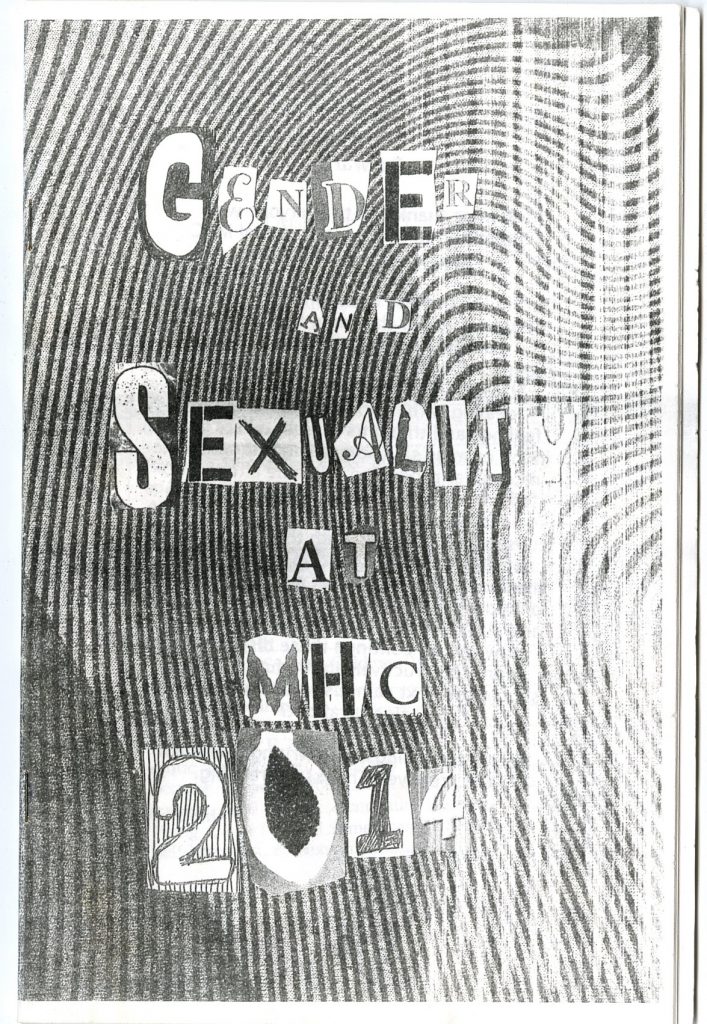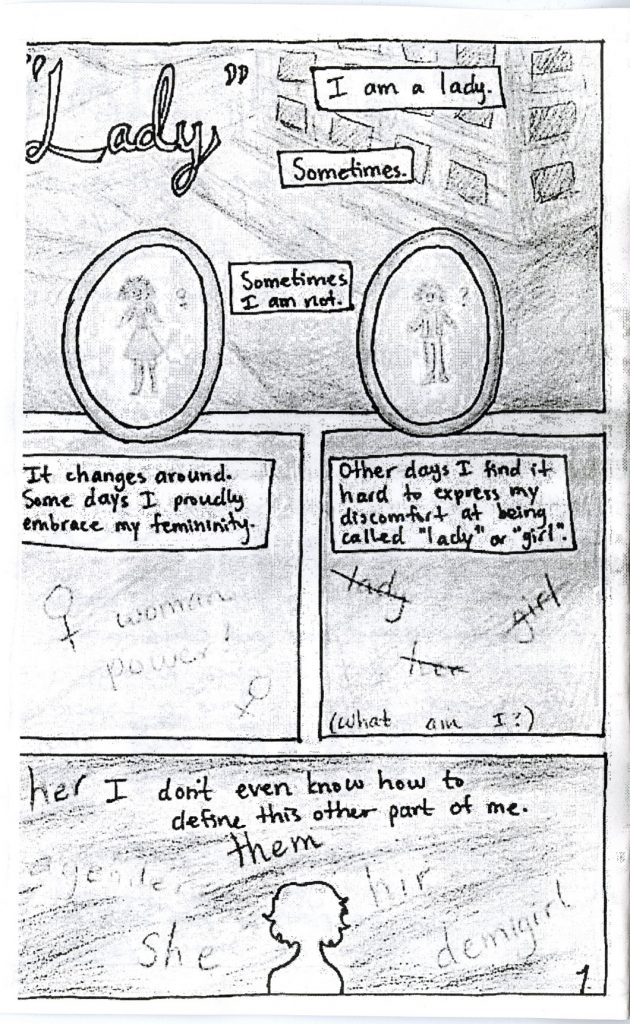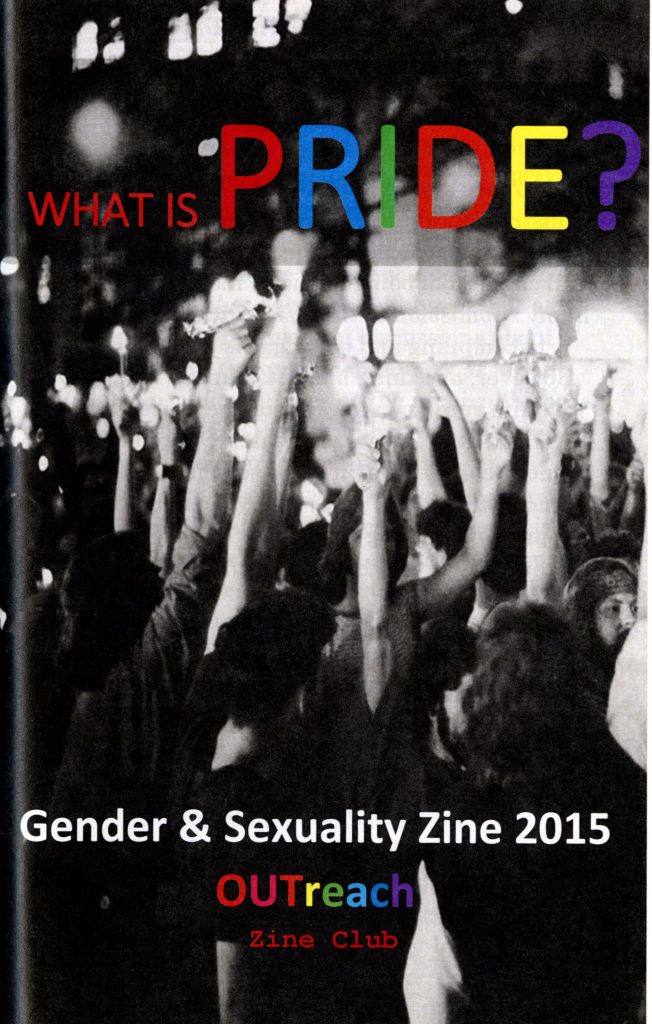Trans and gender nonconforming (TGNC) inclusion from the late to early 1990s
While Mount Holyoke did not adopt a TGNC-inclusive admissions policy until 2014, TGNC people were part of the College’s community long before the 2010s. Visibility and representation, as seen through College records, began to increase during the 1990s. By the 21st century, TGNC people were often explicitly included in LGBTQ+ groups’ advocacy at Mount Holyoke. The following is a window into these discussions of gender diversity from 1990-2015.
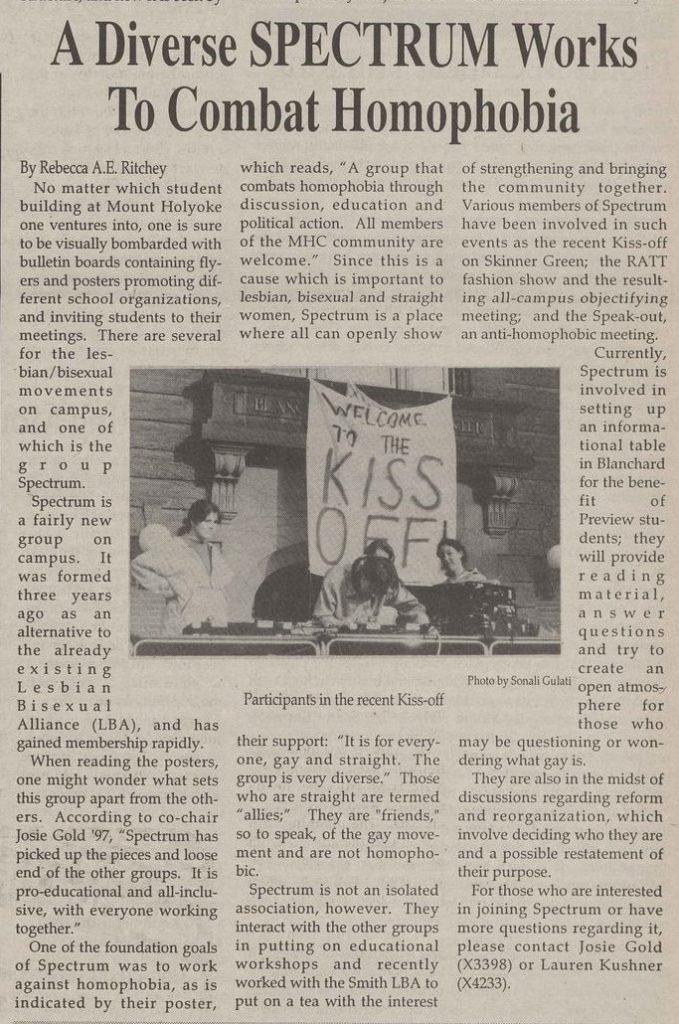
In 1995, an article describes the student group SPECTRUM’s mission in terms of combating homophobia; transphobia is not mentioned. By 1997, the organization is promoting a panel event specifically focusing on TGNC experiences.

A 1996 edition of the zine Slip of the Tongue highlights the prevalence of lesbian and bisexual people in society. A 1997 edition uses the exact same wording with one exception — TGNC people are now represented, too.
A 1990 survey of students is issued by the Committee on Lesbian, Gay, and Bisexual Issues and focuses only on the identities listed in the committee’s name. While that name remains the same in 1998, the committee’s scope has changed: the survey now represents TGNC people in a listing of options for self-identification. Two students, making up 0.7% of the survey sample, choose the option.
TGNC voices in the 21st century
A student organization explicitly including TGNC people, called True Colors, exists at MHC as early as 2001.
A leaflet from the Coalition for Gender Awareness, published sometime after 2008, seeks to educate readers about terminology related to TGNC communities.
A 2012 Tumblr post from the Coalition for Gender Awareness explains how a workshop, led by the group, helped lead the Office of Residential Life to ask incoming students about their names and pronouns.
A series of zines from 2013-2015 shares student perspectives on gender and sexuality.
